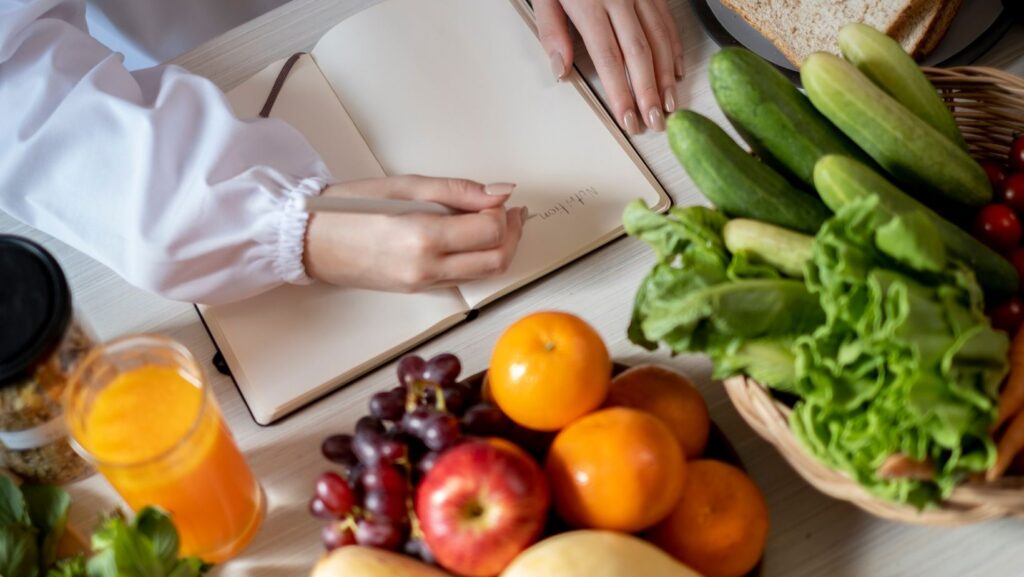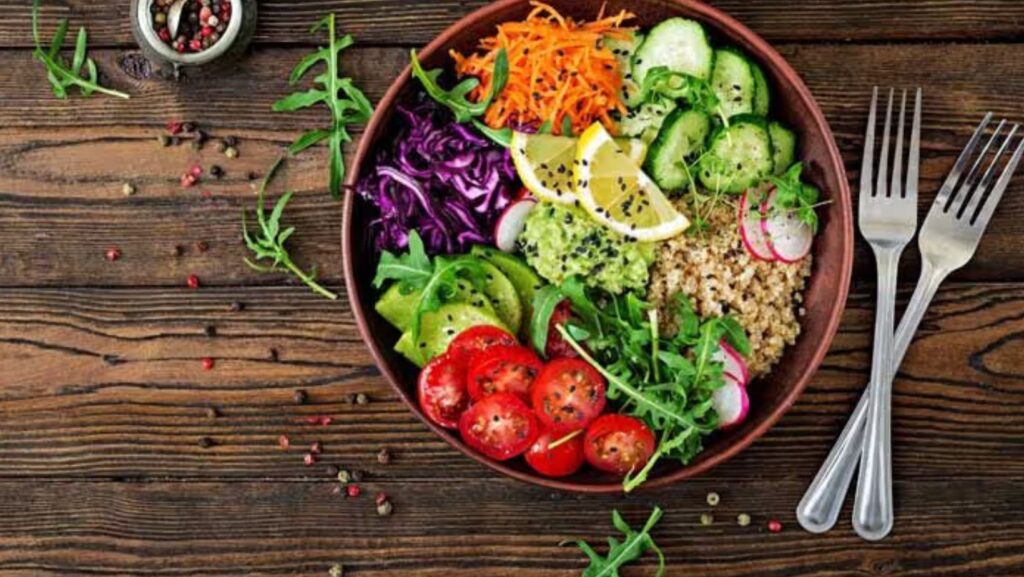A well-planned plant-based routine can cover every macro and micro you need, from steady protein to the trickier nutrients like vitamin B12 and iron. If you treat your pantry like a sportsbook—placing smart “bets” on fortified foods, legumes, seeds and soy—you can win the long game on energy and recovery. (Think of it like keeping a comparison tab such as https://first.com/casino/most-casinos open while you decide where to play.) Below, you’ll find the essential nutrient playbook and a 7-day menu that puts it all on autopilot. Well-planned vegetarian and vegan patterns are considered appropriate across the life cycle; the key is locking in a reliable B12 source.
Key Nutrients: B12, Iron and Protein—What to Prioritize
Before we talk menus, it helps to set targets. Vitamin B12 is the non-negotiable because plants don’t make it; iron needs a small absorption trick; protein is easier than it looks when you build meals around legumes, soy, grains and seeds.
Quick reference table
| Nutrient | What it does | Daily target (adults) | Best plant sources & tactics |
| Vitamin B12 | Nerves, DNA, red blood cell formation | ~2.4 µg/day (higher in pregnancy/lactation) | Fortified plant milks, breakfast cereals, nutritional yeast; or a dedicated B12 supplement if you don’t hit fortified servings daily. |
| Iron (non-heme) | Oxygen transport, energy metabolism | ~8 mg/day for adult men and post-menopausal women; ~18 mg/day for women 19–50; pregnancy ~27 mg/day | Lentils, chickpeas, tofu/tempeh, black beans, pumpkin seeds, cashews, oats, spinach; add vitamin-C-rich foods (citrus, berries, peppers) with meals for better uptake. |
| Protein | Tissue repair, immune support, satiety | ~0.8 g/kg body weight/day for most healthy adults; older adults often do better at ~1.0–1.2 g/kg | Tofu, tempeh, edamame, soy milk, seitan, lentils, beans, peas, quinoa, buckwheat, hemp hearts; spread across meals for better use. |
Takeaway. Make B12 automatic (fortified foods or a supplement); pair iron foods with vitamin C; and hit protein at each meal instead of leaving it all for dinner. These three habits cover 90% of the “how do I not fall short?” worries.
7-day Ready-made Plant-based Menu (Balanced for B12, Iron & Protein)
This plan keeps prep simple, repeats ingredients smartly, and bakes in the micronutrient moves you just saw:

B12 via fortified staples, iron from legumes/greens/seeds, and protein spaced across the day. Portions can flex with your calorie needs; add fruit, extra grains, or a larger protein serving if you train hard.
Your Week at a Glance
- Day 1.
Breakfast: Overnight oats with soy milk (fortified), chia, peanut butter, strawberries.
Lunch: Lentil-walnut “taco” bowl (brown rice, lentils, tomato-pepper salsa, lettuce, lime).
Snack: Orange + handful pumpkin seeds.
Dinner: Tofu stir-fry (broccoli, bell peppers, snap peas) over quinoa; sprinkle nutritional yeast. - Day 2.
Breakfast: Smoothie (fortified soy milk, frozen berries, spinach, oats, hemp hearts).
Lunch: Chickpea “tuna” salad on whole-grain sourdough with arugula and pickles.
Snack: Roasted edamame.
Dinner: Tempeh bolognese with whole-grain pasta and side salad with lemon. - Day 3.
Breakfast: Fortified whole-grain cereal + soy yogurt + sliced banana + flax.
Lunch: Black bean burrito (whole-wheat wrap, black beans, rice, corn, pico, avocado, lime).
Snack: Kiwi + square of dark chocolate.
Dinner: Sheet-pan tofu, sweet potato and Brussels sprouts; tahini-citrus drizzle. - Day 4.
Breakfast: Scrambled tofu (turmeric, mushrooms, spinach) with whole-grain toast; glass of fortified orange juice.
Lunch: Red lentil soup, side of quinoa tabbouleh with tomatoes and parsley.
Snack: Apple + almond butter.
Dinner: Peanut-ginger tempeh with cabbage-carrot slaw and brown rice. - Day 5.
Breakfast: Buckwheat pancakes with soy yogurt and blueberries; drizzle maple.
Lunch: Mediterranean bowl (hummus, warm chickpeas, roasted peppers, cucumber, olives, farro).
Snack: Clementines + sunflower seeds.
Dinner: Coconut-tomato chickpea curry with spinach over basmati; squeeze of lime. - Day 6.
Breakfast: Chia pudding made with fortified soy milk; diced mango and toasted coconut.
Lunch: Soba noodle salad with baked tofu, edamame, carrots, scallions; rice vinegar-sesame dressing.
Snack: Pear + small handful of cashews.
Dinner: Mushroom-lentil shepherd’s pie; lemony kale salad. - Day 7.
Breakfast: Avocado toast topped with hemp hearts and cherry tomatoes; side of fortified orange juice.
Lunch: Quinoa-white bean salad with roasted cauliflower, raisins, parsley, citrus vinaigrette.
Snack: Grapes + popcorn.
Dinner: BBQ tempeh or tofu with baked potato, steamed greens, and corn on the cob; sprinkle nutritional yeast on the greens.
How to work the plan.
- B12: Fortified soy milk, cereals, nutritional yeast and fortified juices appear across the week; if you don’t use them daily, take a B12 supplement per label or practitioner advice. Adults typically target ~2.4 µg/day, higher during pregnancy and lactation.
- Iron: Lentils, chickpeas, tofu, beans, greens and pumpkin/sunflower seeds show up often; pairing them with citrus, tomatoes, berries or peppers improves absorption. Tea and coffee can wait 45–60 minutes after meals.
- Protein: Each meal lands a meaningful protein source; most healthy adults do well at ~0.8 g/kg/day, while many older adults benefit from ~1.0–1.2 g/kg/day spread over three meals.
Final Notes for Easy Adherence
You don’t have to cook everything from scratch. Batch-prep a pot of lentils and a tray of baked tofu or tempeh on Sunday; cook extra grains (quinoa, farro, rice) for the fridge; keep frozen veg, berries and edamame on hand. If your schedule is intense, fortified ready-to-eat cereal with soy milk or a protein-rich smoothie is a reliable breakfast. If you’re brand-new to plant-based eating, ask your clinician about a basic multivitamin/mineral if you want training wheels while your habits settle, and get routine labs as recommended. The mix above—reliable B12, iron with vitamin C, protein at each meal—covers the fundamentals while staying realistic for busy days.

